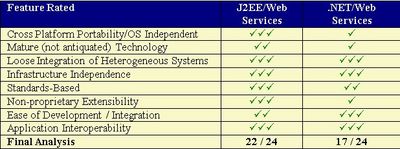V1.3 FPDS-NG Web Service Integration Specifications
From FPDS-NG
Contents
Scope
Purpose
Under GSA’s initiative and direction, the Federal Procurement Data System (FPDS) Next Generation has been reengineered as a real-time federal enterprise information system. The advent of platform, language, vendor, and tool independent standards has enabled data processing and transport to be carried out seamlessly between heterogeneous systems.
Web services based on SOAP and XML, implemented using Java technologies, are used in FPDS-NG to provide interoperability with various federal procurement systems.
Conceptual Architecture
FPDS-NG consists of two functional domains and one administrative domain. The two functional domains, Data Collection and Business Intelligence/Reporting, are depicted in Figure.
Data Collection: This domain provides multiple mechanisms to feed contract award data from procurement systems throughout the federal government to FPDS-NG. Emphasis is on real-time integration to shorten the lag time between contract award and data availability in FPDS-NG, and to increase data quality by removing batch interfaces and the need to re-key data into agency systems.
Business Intelligence/Reporting: This domain provides multiple mechanisms to report FPDS-NG data to a wide spectrum of interested parties. The reporting mechanisms include canned, ad hoc, and OLAP analysis reporting which are delivered based on the format and schedule preferences established by the user.
System Administration: This domain manages user profiles, user authentication, reference tables, and other system functions such as purging old error records, and monitoring data quality.
Service Oriented Architecture
The FPDS-NG system architecture, shown in Figure 2–1, is based on a Service-Oriented Architecture (SOA) platform. The choice of a SOA is based on the requirement of GSA to produce a web service based application that will allow integration of FPDS-NG with agency systems. All identifiable system functions are published as services that external systems invoke using open standards over a network. This architecture exposes all system functions including business logic, GUI screens, and reports making them all accessible to agency systems. The value of a SOA-based approach is realized in the reusability of the components. Reusability offers the government tremendous savings of time and money as software development is leveraged by many systems without the need for additional development or redundant efforts. Reusability also provides the government with the ability to construct authoritative services for vital information (e.g. NAICS codes, vendor data, etc). SOA is the architectural structure underpinning web services and is developed to the J2EE standard. The technologies used to invoke web services promote interoperability. These technologies include:
- XML, which defines a universal way of representing data
- SOAP, which provides the transport mechanism for web services
- WSDL, which describes a web service definition
- UDDI which allows users and applications to locate or publish web services in a registry.
FPDS-NG Service Architecture
Figure 4–1 describes the FPDS-NG high level service architecture. It uses a building-block approach to maximize reusability. The FPDS-NG service architecture contains several layers, each of which is fully reusable. For example, the business services are used by migration software, GUI services, and external procurement systems. The layers are:
- COTS Layer: This layer consists of the Oracle 10g database and the Informatica™ reporting server. The Informatica™ reporting server utilizes the Oracle 10g database for all data queries.
- FPDS-NG Services: This layer consists of the GUI and business services which centralize all FPDS-NG business logic. The GUI services layer represents all FPDS-NG screens. The GUI screens use the business services to validate and post FPDS-NG transactions.
- FPDS-NG Applications: This layer represents FPDS-NG software that employs reusable services. For example, the batch processor and migration software use the business services (Note: batch submission is no longer supported in Version 1.3)
- External Systems: This layer represents legacy systems and COTS products that wish to integrate with FPDS-NG services. FPDS-NG allows integrators use any of the business, GUI service or reporting services. For example, agencies may integrate with FPDS-NG at the business services level or reuse the FPDS-NG data collection screens.

